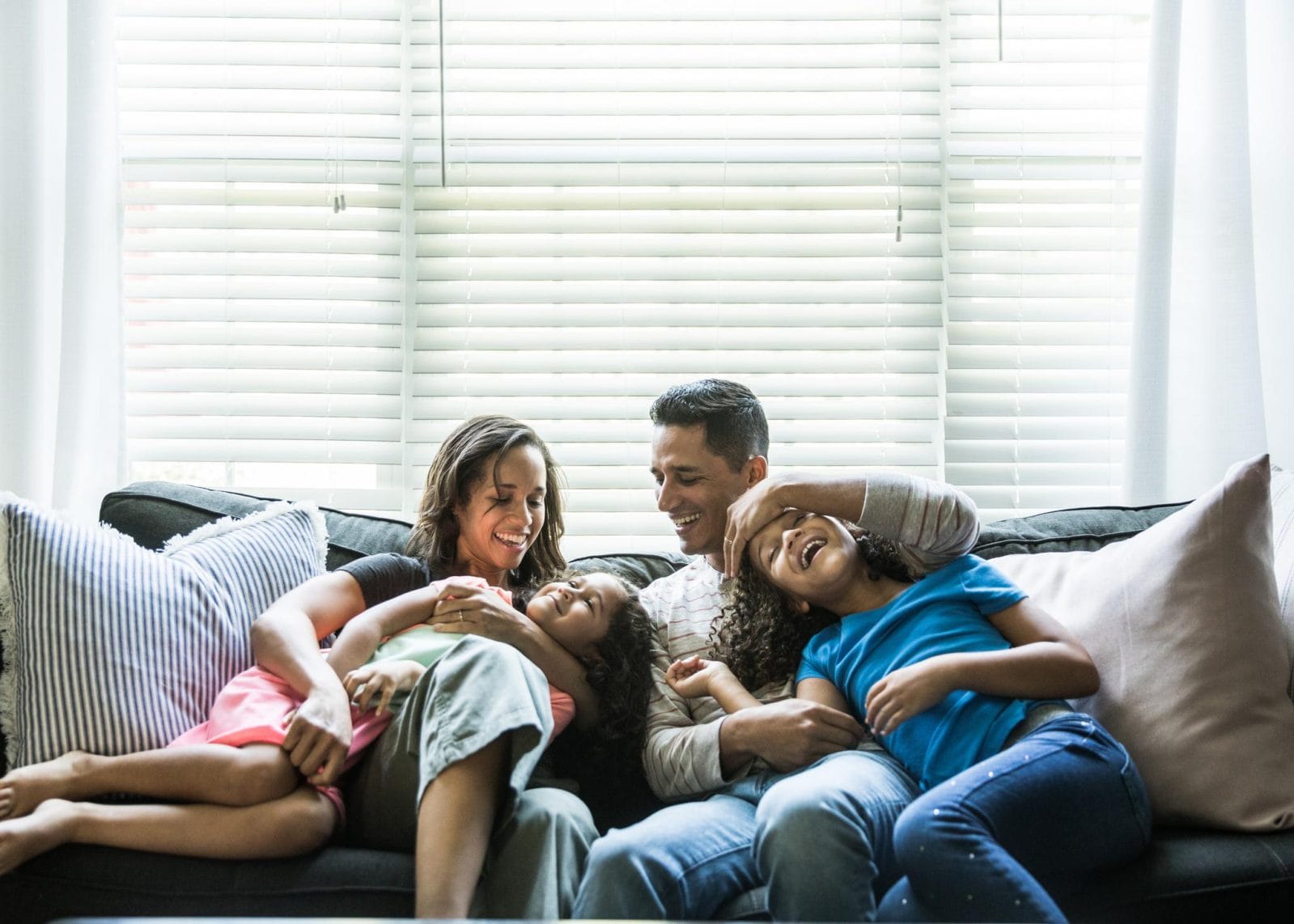Why ‘lazy parenting’ is actually a recipe for happy families

Turns out it's not lazy at all.
Table of Contents
There has been growing buzz lately about what some are calling “lazy parenting.” It’s being touted as the antidote to helicopter parenting, and, while its name may suggest otherwise, it’s actually anything but lazy. So what’s the deal with lazy parenting? How do I do it and what will it do for my kids?
When I first heard of lazy parenting, I thought someone had been spying on my house on Fridays from 5:30 p.m. until bedtime.
You know, the time when my husband and I have no energy left for parenting, so we have dinner picnics—cold cuts, apple slices, cheese sticks and crackers while sitting on a blanket on the family room floor—and then the kids play by themselves while I stare at the ceiling thinking about how many loads of laundry are waiting for me this weekend.
In those moments, I feel like I’m simply there as a somewhat engaged supervisor, making sure no one gets hurt and nothing catches fire. It certainly doesn’t feel like “good” parenting, and I often felt guilty that I wasn’t doing more. I was a parent, and I was being lazy—that’s lazy parenting, right? Not entirely, it turns out.
In actuality, the outcome of my Friday night laziness was similar to the outcome of lazy parenting, but I was not fully grasping what was going on.
What is lazy parenting?
Lazy parenting is about intentionally providing your child with opportunities to develop a sense of self-efficacy, which in turn will bolster confidence, independence and responsibility. It’s about mindfully stepping back to allow your child to struggle on their own for a minute rather than rushing in and rescuing. It’s about letting your child find out just how much they are capable of. And they actually are capable of a lot!
Children can benefit tremendously from this approach to parenting. When parents step in prematurely when a task seems difficult, or don’t even allow their child to enter a situation that could potentially be challenging, children do not get a chance to learn what they are capable of.
Related: What’s the ‘best’ parenting style to raise a successful child?
Additionally, depending on their age, they may begin to internalize a belief that they are incapable—if mom always rushes in to help, it must be because she knows I can’t do it. This can contribute to increased anxiety as the child begins to encounter life outside the home, where mom isn’t available to help all the time.
If parents continue to anticipate and take care of every challenge for their child, the child also loses out on the chance to develop basic life skills. I sometimes see this in older teenagers I work with.
A parent has always taken the lead on making sure homework is done, projects are completed, and social plans are made. Now the teen has transitioned to college and is struggling significantly. They don’t know how to organize themselves or manage their time. They have difficulty making and maintaining friendships. These are very bright young adults, but they were simply never given an opportunity to learn basic executive functioning skills.
So how is what happens in my family room at the end of the work week different from actual lazy parenting? What I was doing was accidentally lazy parenting—more lazy, less parenting. I was simply zoned out, and luckily my kids managed to play nicely without my direction.
Lazy parenting as an actual parenting style is quite intentional. It will look different depending on how old your kids are, but here are a couple of places to start.
Tips for practicing lazy parenting
1. Create a ‘yes’ space and then let them have at it
Find a spot in your home that you can set up for your child that allows them to freely explore anything and everything within it. It can be an entire room or an area of a room that you are able to contain. Fill it with age-appropriate items that do not require close supervision for safety. Then let your child explore while you step back.
Depending on your child’s personality and age, they may need you to be physically present in the space with them, but the point is that you do not direct or constrain the play. Let them do their thing! You don’t have to worry because you know they are safe. Resist the temptation to rush in if they are struggling with something—a toy they can’t figure out, or a pillow they can’t climb over.
Give them time and space to work through their frustration and master the problem. This is the goal: Learning that they are independently capable.
2. Get comfortable with natural consequences
Giving your child responsibility involves accepting that there will be times that they do not do what they need to do. Lazy parenting accepts this and says that, within reason, children should suffer the natural consequences of their decisions.
For example, consider the middle school child who is old enough to pack their backpack each night. Previously, mom was checking to make sure every homework assignment was completed and packed for the next day.
Following lazy parenting, mom walks her child through the process and then leaves the child to handle the actual checking and packing herself. On the days that she remembers to follow the routine, everything works out well, and the child feels confidence and pride in her ability. On the days that she skips what she knows she’s supposed to do, homework assignments are forgotten at home.
While mom may be tempted to rescue her daughter when she notices the folder left behind on the kitchen table, she does not. Instead, she knows that her daughter will be able to manage the natural consequences and that experience will help her remember the next time.
In general, intentionally lazy parenting is the shift in thinking from, “I need to move in and fix this for my kid” to, “I need to step back and see if my kid can manage this on their own. It might take longer and be messier, but if they can do it themselves, then they should.”
A version of this post published May 2018. It has been updated.


































